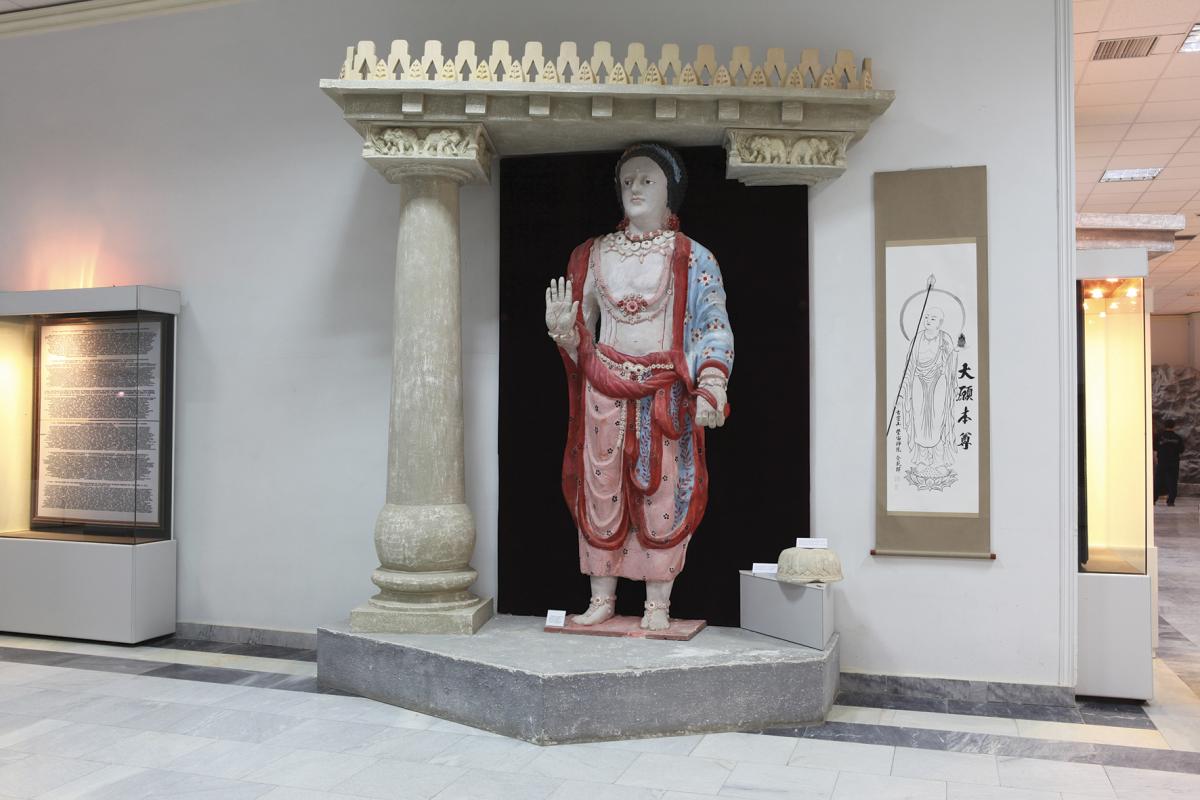Rising Like Phoenix From Its Ashes
Looking at the geographical location of Termez, you begin to realise why this city, wiped off the map so many times, has always risen like Phoenix from its ashes at this very location on the wide elbow of the Amudarya River, only slightly changing its place.

When Genghis Khan seized ancient Termez and razed it to the ground in 1220, its survived inhabitants moved eastwards. The formation of the new city continued over the 13th and 14th centuries. The Sultan Saodat - a complex of mausoleums of the Termez Saiyids, descendants of the Prophet, became the central part of the city. The first (pre-Mongolian) structures of the complex date from the late 10th century and include two mausoleums with a mosque between them. The al-Mulk Mausoleum, alias Sultan-i-Saodat, gave the name to the whole complex. After the Mongol invasion, two new mausoleums were erected next to the ones built before. The city began to grow around the mausoleums. Its first name was Ghulguda, i.e. ‘The Busy Town’.
Baked bricks were used in the construction of most of the town’s edifices. The sheer fantasy of the constructors is truly amazing, especially in the brickwork which almost exhausted the artistic potential of this material. Bricks were laid in different fashions and formed a wide range of patterns with imaginative names, such as ‘herring-bone’, ‘bow’, ‘diamond’, ‘ring’, or ‘bud’. The belts were made of dressed bricks and the four walls supporting the octagonal deck of arched sails were often crowned with big domes. This remarkably ascetic style was typical only of the Termez architecture.
The greater part of the original décor had been lost over the centuries: the place was very popular with pilgrims who burnt candles and torches there, so the mausoleum’s custodians had to repair the buildings quite frequently, which reduced the original patterns to zero. The time was not merciful to the building either. Numerous earthquakes destroyed the brickwork, and hanakas were used as kitchens or sheep pens at different stages. However, modern historians of art helped to restore the initial décor and shape of the complex, with its majolica tiles and walls painted in gold and cobalt blue.
Now, the restored complex of majestic tripartite mausoleums with its ascetic architecture looks impeccable and perfect. Silence and noble tranquility reigns over the tombs of the Saiyids.
Al Khakim At-Termezi, the patron of Termez

According to one of the versions, his full name was Abu Abdallah Mukhammad ibn Khasan ibn Bashir, but his contemporaries used to call him simply al Khakim, which means ‘the Sage’.
Only about 60 works written by At-Termezi have survived, but according to some scholars, his oeuvre is said to have been at least 80 treatises. Some other sources even put the number up to 400 works.
The collections of At-Termezi’s treatises are kept in the az-Zahiriyya library of Damascus and in Alexandria (Egypt); five manuscripts are in London, and some other books can be found in Leipzig and Istanbul. As the scholars believe, At-Termezi was well aware of the Buddhist, Christian and Manichean doctrines, and their influence can be traced in his treatises. At-Termezi won recognition of his contemporaries for his wide world outlook and profound knowledge, and so he got his nickname ‘the Sage of Termez’.
At-Termezi was buried at the walls of the Termez citadel, and later a mausoleum constructed of baked bricks was built over the tomb. In the 11th century, the mausoleum walls were decorated with alabaster stucco carvings. Later a memorial mosque was built near the mausoleum. Its décor is dated back to the 12th century. In 1389, a new mausoleum was erected next to the old one and the most impressive edifice of the complex was constructed in 1405 – that was a two-portal khanaka (shelter for dervishes). Such architectural plan was quite an unusual phenomenon in Central Asia. Today, the mausoleum houses a small archeological museum, and its collection contains very rare and interesting exhibits shedding light on the everyday life of ancient people. Below the mausoleum ground level, there is a memorial room with a white marble grave stone ‘sagana’. The gravestone can be considered a real masterpiece of the Timurid decorative stone carving art and calligraphy.
The mausoleum can impress everybody with its unusual shape and décor – the black, gold and white colours are saturated with various magic signs and symbols. Visiting the place helps to appreciate and understand the correctness of the great Sufi’s words: the material is transient, the spiritual is eternal.
 ENG
ENG  РУС
РУС
 O'Z
O'Z